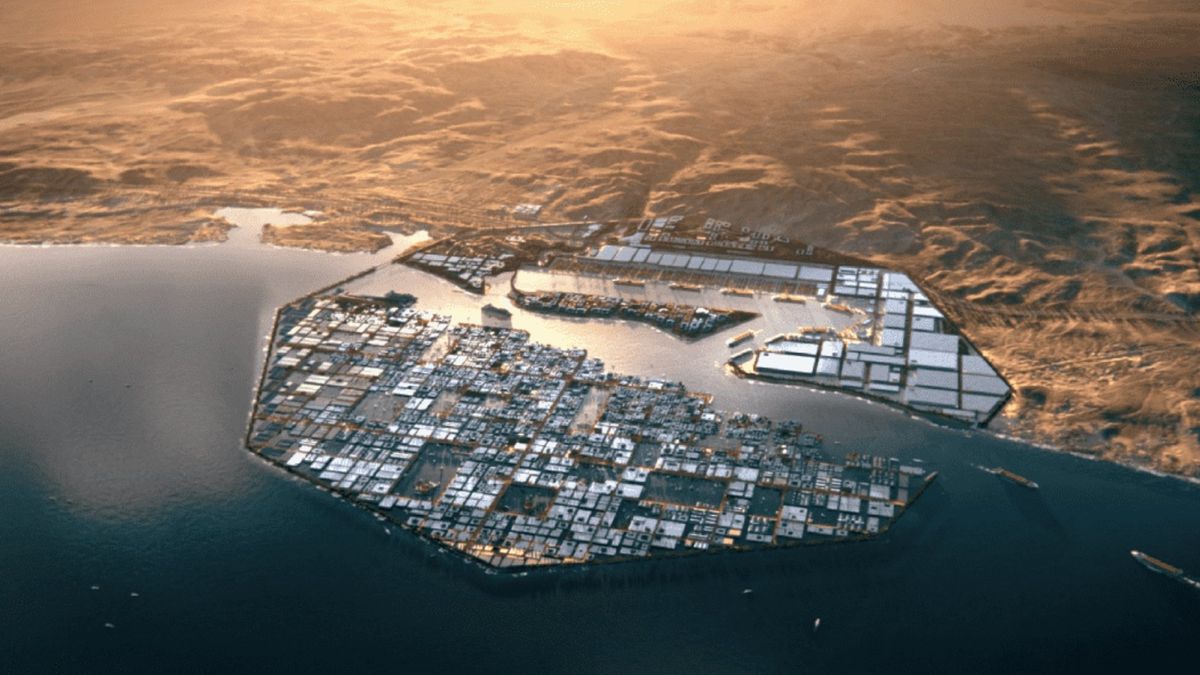Saudi Arabia’s ambitious Neom project continues to make headlines, this time with visible progress at Oxagon, its futuristic floating industrial complex. Newly released satellite imagery has revealed significant developments at the Port of Neom, located in Oxagon, one of the most striking components of the world’s largest construction site.
Here are six key things to know about the giant port being developed at the heart of this next-generation megacity:
A port at a strategic global trade artery
The Port of Neom is rising on the Red Sea, along one of the busiest maritime trade corridors in the world. Its proximity to the Suez Canal—through which nearly 12% of global trade passes—gives it a pivotal advantage. This location positions Oxagon as a crucial new player in connecting Asia, Africa and Europe.
Update🚨: Recent images posted by Giles Pendleton (Chief Operating Officer THE LINE at NEOM | Chief Development Officer) of Oxagon, showing immense progress in infrastructure works + Oxagon village is about to have more construction work coming as the site being prepared. pic.twitter.com/pRnHgESy0J
— Saud (@Saudfromabove) April 13, 2025
A symbol of Saudi Arabia’s economic transition
Oxagon is part of the Saudi Vision 2030 initiative aimed at reducing the kingdom’s dependence on oil. Along with other components like The Line and Trojena, it reflects Crown Prince Mohammed bin Salman’s ambitions to reposition Saudi Arabia as a global hub of innovation and sustainability.
World-class automation arrives
In a major milestone, the Port of Neom recently received Saudi Arabia’s first fully automated, remote-controlled cranes. This step marks the beginning of a tech-first operational approach, designed to enhance Red Sea logistics and attract global business through efficiency and digital transformation.
A hub for green energy and smart industries
Oxagon is also the site for Neom’s Green Hydrogen Company (NGHC), which is developing what will be the world’s largest green hydrogen plant. The $8.4 billion project underscores Oxagon’s role as not just a logistics centre but a future global capital for sustainable industry.
Designed for people and planet
Unlike conventional industrial zones, Oxagon has been envisioned as a mixed-use, compact city that will run entirely on renewable energy. Its planners aim to host around 90,000 residents by 2030. “Industrial development cannot continue at the expense of people or the environment,” said Oxagon CEO Vishal Wanchoo in May.
Strong global interest and leadership focus
Neom recently appointed a new CEO tasked with tackling budget overruns and delays across its many sub-projects. Despite these challenges, optimism remains high. Melissa Blake, Port Director at Neom, wrote on LinkedIn: “Port of Neom is excited to receive the first batch of cranes and other cargo handling equipment as we come another step closer to delivering our vision.”
The Saudi government describes Oxagon as “a place where people, nature and technology come together in harmony,” signalling a break from traditional development models.
What’s next?
The Port of Neom is expected to become the primary gateway for trade in northwestern Saudi Arabia. With a smart logistics hub connecting three continents, the port could redefine how goods flow through the region, offering a glimpse of what global trade might look like in the decades to come.


)

)
)
)
)
)
)
)
)



